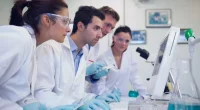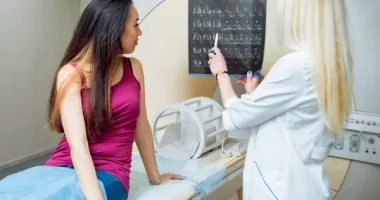Navigating the Maze of Information and Social Influences: A Deeper Look at Infection-Preventive Behavior
In the intricate tapestry of human behavior, the choices we make regarding our health are profoundly influenced by a multitude of factors, a captivating interplay between personal characteristics, the information we consume, and the social networks that surround us. This interplay is particularly evident in the realm of infection-preventive behavior, where our decisions to wear masks, sanitize our hands, and practice social distancing can have far-reaching consequences for both our individual well-being and the collective health of our communities.
A recent study published in the International Journal of Disaster Risk Reduction sheds light on this intricate dance of factors, examining how individual characteristics and information sources shape infection-preventive behavior in Japan. This nation, where mask-wearing and hand-washing practices have largely been left to individual discretion since the onset of the COVID-19 pandemic, provides a unique lens through which to explore the delicate balance between personal agency and external influences.
Prior to the COVID-19 outbreak, researchers from Osaka University observed a clear correlation between individuals’ consumption of medical information from government or medical institution websites and their engagement in preventive behaviors. Those who actively sought out credible sources of health guidance were more likely to adopt protective measures, suggesting a conscious effort to safeguard their well-being based on expert recommendations.
However, the emergence of the pandemic ushered in a subtle yet significant shift in this pattern. As social networks became a primary conduit for information exchange, individuals who engaged in discussions and advice-sharing with their acquaintances were more likely to adopt mask-wearing and hand-disinfection practices. This observation highlights the transformative power of our social circles in shaping our health-related decisions. When we hear about preventive measures from those we trust and interact with, we are more inclined to embrace them, demonstrating the importance of fostering open communication and peer-to-peer education in promoting public health initiatives.
The study also unearthed intriguing gender differences, revealing that men were consistently less likely to adopt infection-preventive behaviors compared to women. This disparity underscores the need for tailored communication strategies that address the unique needs and perspectives of different demographic groups. By understanding the nuances of gender-specific health perceptions and behaviors, public health officials can craft more effective messaging that resonates with the target audience.
The study’s findings provide a valuable roadmap for navigating the complex interplay between individual characteristics, information sources, and social networks, offering a clearer understanding of the factors that influence our decisions about preventive measures. By appreciating these dynamics, public health officials can develop more effective strategies to promote disease prevention. Tailored messaging, peer-to-peer education, and community engagement can all play a pivotal role in encouraging preventive behaviors and safeguarding public health.
As we continue to confront the ever-present threat of infectious diseases, understanding the intricate interplay between individual characteristics, information sources, and social networks becomes increasingly crucial. By harnessing the power of these factors, we can empower individuals to make informed decisions about their health, fostering a healthier and more resilient society.
Beyond the Pandemic: Implications for Public Health
The insights gleaned from this study extend far beyond the confines of the COVID-19 pandemic, offering valuable lessons for promoting infection-preventive behaviors in the face of future health threats. By understanding the delicate balance between individual characteristics, information sources, and social networks, public health officials can craft more effective strategies to encourage preventive measures, safeguarding the well-being of communities worldwide.
Harnessing the Power of Information Sources
The study’s findings highlight the crucial role of credible information sources in shaping infection-preventive behavior. Public health officials must prioritize providing readily accessible, understandable, and science-backed health guidance to the public. Utilizing a variety of communication channels, including traditional media, social media platforms, and community engagement initiatives, can ensure that essential health information reaches a wide audience.
Leveraging Social Networks for Peer-to-Peer Education
Social networks possess immense potential to amplify the reach of public health messages and encourage preventive behaviors. By encouraging open communication and knowledge sharing within communities, public health officials can harness the power of social networks to promote health-promoting practices.
Tailoring Strategies to Specific Demographics
The study’s revelation of gender disparities in infection-preventive behavior underscores the importance of tailoring public health strategies to specific demographic groups. By understanding the unique needs, perceptions, and behaviors of different populations, public health officials can craft more effective messaging that resonates with the target audience.
In conclusion, the study published in the International Journal of Disaster Risk Reduction provides valuable insights into the intricate interplay between individual characteristics, information sources, and social networks in shaping infection-preventive behavior. By appreciating these dynamics and implementing tailored strategies, public health officials can effectively promote preventive measures, safeguarding
Continue to check our website for more articles of this kind. And, please use our comment section as well, we would love to hear from you.








